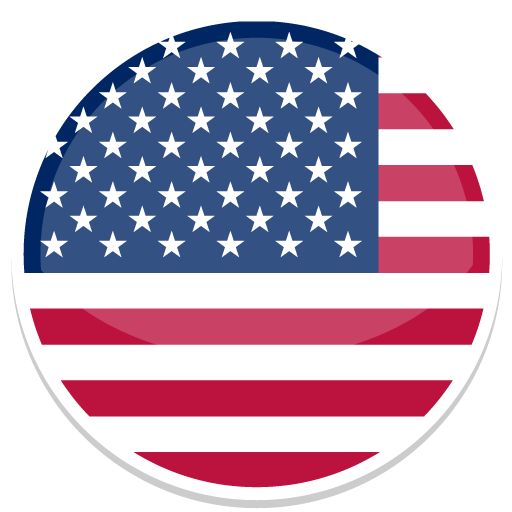
 Unlimited United States VPN Servers
Unlimited United States VPN Servers
Last Updated: 2025-04-18 23:29:38 CST
Flow VPN provides VPN servers in United States, with servers hosted in a data centre near Washington.
The United States boasts a highly developed internet infrastructure, offering high-speed connections via fiber, cable, and 5G networks. Key players include companies like AT&T, Verizon, and Comcast. The country is known for its tech giants such as Google, Amazon, and Meta. Internet access is widespread, though disparities in coverage exist between urban and rural areas. The U.S. also emphasizes net neutrality and cybersecurity in its digital policy framework.
Get connected to VPN servers in United States
Get Unlimited VPN for United States from $1.99
VPN Services are available to access from United States, and FlowVPN has infrastructure in this region giving you fast, unlimited access to the Internet. Our VPN servers are in a data centre close to Honolulu providing secure global Internet to customers in Washington.
Access United States VPN Servers with FlowVPN now
As well as servers in United States, FlowVPN has 100s of servers located in 70+ countries giving you the freedom of fast, unlimited VPN.
Get VPN IPs in United States
FlowVPN has multiple servers in United States giving you access to local IPs. Get unlimited VPN access to United States through FlowVPN’s global network.
Get connected to United States VPN servers for just $1.99!
Sign-up to FlowVPN with VPN Promotion / Coupon Code COUNTRY-UNITED STATES for just $1.99 for your first month – almost half the normal price!
United States VPN Services
Flow VPN provides VPN services from our host near Honolulu, United States. The servers near Honolulu is part of our high speed global network spanning 100+ locations in more than 60 countries. We provide unlimited United States VPN services with a free trial, protecting your data allowing you to access the Internet privately and securely. We do not artificially cap your bandwidth.
We have multiple servers in United States providing a fast and reliable connection.
Our VPN Servers close to Honolulu (United States) support standard VPN protocols including WireGuard, PPTP, L2TP, IPSec, IKEv2, OpenVPN and SSH VPN. We have clients available for iPhone, macOS, Windows and Android – download the FlowVPN app from your App Store or sign-up now.
How fast are Internet connections in United States?
Internet connection speeds in the United States can vary widely depending on location, service provider, and the type of connection available. Here are some average speeds and details:
- Broadband: The Federal Communications Commission (FCC) defines broadband as having a minimum download speed of 25 Mbps and an upload speed of 3 Mbps.
- Cable Internet: Average speeds range from 25 Mbps to 1 Gbps, depending on the service plan and provider.
- Fiber-Optic Internet: Offers high-speed connections with download speeds ranging from 100 Mbps to 1 Gbps or even higher in some areas.
- DSL: Typically offers speeds between 5 Mbps and 35 Mbps, although this can vary based on the distance from the service provider’s facilities.
- 5G Wireless: Speeds can range from 50 Mbps to over 1 Gbps depending on the coverage and technology used.
- Satellite Internet: Usually offers speeds between 12 Mbps and 100 Mbps, but can be affected by weather and latency issues.
It’s important to note that while some areas, especially urban ones, may have access to very high-speed internet, rural areas might only have access to slower DSL or satellite connections.
Is the Internet censored in United States?
Yes, the Internet is subject to some forms of censorship in the United States, although it is generally less restrictive compared to some other countries. Here are a few key points:
- Government Surveillance and Control: The government can engage in surveillance and has done so through programs like PRISM.
- Content Monitoring: Some content can be removed or restricted, especially if it violates laws related to hate speech, copyright infringement, or national security.
- Private Sector Regulation: Major tech companies like Google, Facebook, and Twitter have their own policies for moderating content, which can result in the removal or demonetization of certain types of content.
- Net Neutrality: The debate around net neutrality has implications for internet censorship. The rollback of net neutrality rules can potentially allow ISPs to prioritize certain content over others.
Overall, while there is no broad, sweeping censorship by the government, various forms of content control and monitoring do exist.
Is pornography restricted in United States?
Pornography in the United States is subject to certain restrictions and regulations, but it is not entirely banned. Here’s an overview:
- Legal Restrictions: The production, distribution, and possession of pornography involving minors (under 18 years) is illegal and harshly penalized.
- Obscenity Laws: Material deemed to be “obscene” is not protected by the First Amendment and can be subject to penalties. The Miller Test (from the Supreme Court case Miller v. California) is used to determine whether material is obscene.
- Age Verification: Producers and distributors of adult content must adhere to strict age verification laws to ensure all performers are legal adults.
- State Laws: Individual states can have their own regulations and restrictions regarding the distribution and viewing of pornography. Some states have more stringent rules than others.
In summary, while adult pornography is generally legal in the United States, it is subject to strict regulations, particularly concerning age verification and obscenity standards.
What is the current internet penetration rate in the United States?
As of the most recent data, the internet penetration rate in the United States is around 92%. This means that 92% of the population has access to the internet.
How concerned are people in United States about data privacy?
In the United States, concerns about data privacy are quite significant. Various studies and surveys indicate a growing awareness and unease among the population regarding how their personal data is collected, used, and shared. Here are a few key points:
- Increased Awareness: More people are becoming aware of how their online activities are being tracked and used by companies and governments.
- Data Breaches: Frequent reports of data breaches and leaks have heightened concerns about the security of personal information.
- Regulatory Discussions: There is active discussion about introducing stronger data privacy regulations similar to the GDPR in Europe.
- Use of Personal Data: People are particularly concerned about how their data is used for targeted advertising and the potential for misuse.
- Tech Companies: Major tech companies have come under scrutiny for their data privacy practices, with some facing legal actions and fines.
Overall, it is clear that data privacy is a major issue for many people in the United States, and the trend suggests that this concern is likely to grow in the future.
What are the cybersecurity challenges faced by internet users in United States?
Internet users in the United States face a multitude of cybersecurity challenges. Here are some of the primary concerns:
- Phishing Attacks: Fraudulent attempts to obtain sensitive information by disguising as a trustworthy entity in electronic communications.
- Malware and Ransomware: Malicious software designed to damage or disable systems, and ransomware that locks users out of their systems until a ransom is paid.
- Data Breaches: Unauthorized access to confidential data, often leading to personal information being leaked or stolen.
- Identity Theft: The fraudulent acquisition and use of someone’s personal information, usually for financial gain.
- Weak Passwords: Easy-to-guess passwords that can be quickly cracked by attackers, leaving accounts vulnerable.
- Insider Threats: Threats originating from within the organization, including malicious insiders or compromised employees.
- IoT Vulnerabilities: Security flaws in Internet of Things devices that can be exploited to gain unauthorized access to networks.
- Social Engineering: Manipulative tactics that trick people into giving up confidential information.
- Public Wi-Fi Risks: Using unsecured public Wi-Fi networks that can be exploited by attackers to intercept data.
- APTs (Advanced Persistent Threats): Prolonged and targeted cyber assaults aimed at stealing data or surveilling the target.
Mitigating these threats requires a combination of user awareness, strong security practices, and up-to-date software and hardware protections.
What are the most visited websites in United States?
- YouTube
- Amazon
- Wikipedia
What are the most popular social media platforms in the United States?
- Snapchat
- TikTok
United States VPN Server Status
The United States VPN Server operated by FlowVPN was last automatically tested at: 2025-04-18 23:29:38 CST
This test checks the server uptime and availability, as well as verifying all services are operating as expected.
Our servers are constantly monitored to ensure there are no issues. We use internal monitoring tools as well as multiple third party providers to ensure all services are regularly checked and benchmarked so we can identify any potential issues.
VPN Latency – Ping Speed Test
We perform ping tests from our VPN server in United States to servers around the world. We have multiple servers in almost all locations but the results published below are the most recent test results. We may have faster optimised routes from your location based upon your IP route when connecting.
| United States VPN Ping to Destination Server | Latency (ms) |
|---|---|
| Argentina | 176.964 |
| Armenia | 198.061 |
| Australia 1 | 159.688 |
| Australia 3 | 159.428 |
| Azerbaijan 2 | 221.951 |
| Azerbaijan | 219.361 |
| Bahrain (UK) | 237.532 |
| Bahrain (USA) | 232.042 |
| Bahrain | 232.018 |
| Belgium | 144.305 |
| Bolivia | 157.537 |
| Bosnia | 170.476 |
| Brazil | 172.971 |
| Canada (C) | 63.557 |
| Canada (E) | 56.183 |
| Canada (W) | 32.871 |
| Chile | 155.966 |
| Costa Rica | 113.267 |
| Croatia | 170.069 |
| Czech Republic 2 | 164.360 |
| Denmark | 163.485 |
| Ecuador | 112.761 |
| Estonia 2 | 170.898 |
| Finland 2 | 148.994 |
| France | 141.452 |
| Germany 1 | 151.261 |
| Germany 3 | 149.277 |
| Guatemala | 87.924 |
| Hong Kong 1 | 161.780 |
| Hong Kong 6 | 162.769 |
| Hong Kong 7 | 142.288 |
| Hungary | 165.693 |
| Indonesia | 184.867 |
| Ireland | 143.323 |
| Italy 2 | 183.934 |
| Kazakhstan 2 | 243.562 |
| Latvia 2 | 162.516 |
| Latvia | 178.228 |
| Liechtenstein | 159.465 |
| Lithuania 1 | 170.967 |
| Lithuania 2 | 179.979 |
| Macedonia | 179.236 |
| Malaysia 1 | 185.904 |
| Mexico | 63.345 |
| Moldova | 187.099 |
| Netherlands | 150.141 |
| New Zealand | 139.456 |
| Nicaragua | 110.099 |
| Norway | 177.464 |
| Panama | 104.946 |
| Peru | 123.802 |
| Philippines | 168.206 |
| Poland 3 | 186.491 |
| Portugal | 167.238 |
| Puerto Rico | 91.984 |
| Romania | 177.230 |
| Serbia | 168.127 |
| Slovakia | 160.877 |
| South Africa | 322.573 |
| South Korea 2 | 131.467 |
| Spain 1 | 160.311 |
| Spain 2 | 149.661 |
| Sweden 1 | 166.669 |
| Sweden XIP | 166.145 |
| Switzerland | 159.298 |
| Taiwan 3 | 171.514 |
| Taiwan 4 | 137.808 |
| Taiwan 5 | 168.189 |
| USA via Singapore | 170.157 |
| USA via Taiwan | 133.759 |
| Ukraine | 176.894 |
| United States Hawaii | 46.706 |
| United States LA | 30.349 |
United States Facts
United States Top Level Domain: .us
Currency: Dollar
